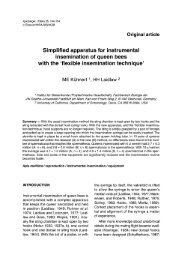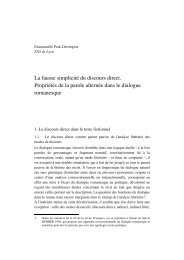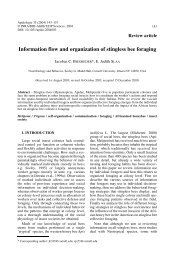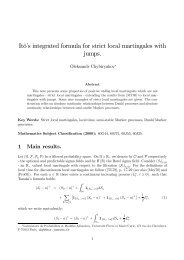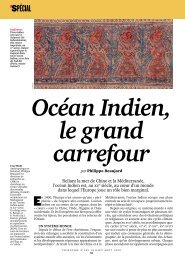ARBEITSGEMEINSCHAFT DER INSTITUTE FÜR ... - HAL - INRIA
ARBEITSGEMEINSCHAFT DER INSTITUTE FÜR ... - HAL - INRIA
ARBEITSGEMEINSCHAFT DER INSTITUTE FÜR ... - HAL - INRIA
You also want an ePaper? Increase the reach of your titles
YUMPU automatically turns print PDFs into web optimized ePapers that Google loves.
is caused by its content of caffeoylic compounds. Propolis of non-tropical origin<br />
does contain those compounds, including caffeic acid itself as well as two different<br />
quercetin dervatives. Only traces of underivatized quercetin, luteolin and especially<br />
one or two different dicaffeoylics were found in each sample. These dicaffeoylics<br />
were shown by us for the first time to occur in propolis by a combination of<br />
HPLC and UV spectroscopy. On the other hand, no phenolic compounds of any<br />
type were detected in our tropical samples from Hawaii, although they too<br />
exhibited antiviral activity.<br />
Herpes viruses of several different bird species (including the tumourforming<br />
Marek virus) and the mammalian pathogen Aujeszky virus have been<br />
tested successfully. An interesting trend was found : whereas the majority among<br />
our test viruses was more strongly inhibited by compounds with the caffeoylic<br />
molecular moiety tightly enclosed in a larger molecule (e.g. flavonoids or aurones),<br />
the few remaining viruses were more strongly inhibited by compounds with the<br />
caffeoylic molecular moiety reaching more « freely out of the whole molecule<br />
(however, in every case, the vicinal hydroxy groups of the caffeic acid had to be<br />




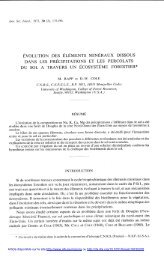
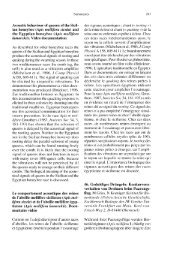
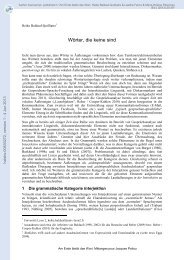
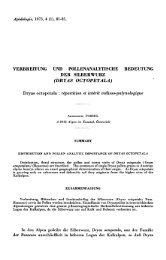
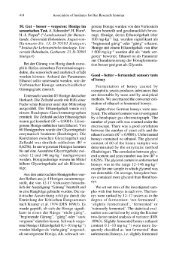
![4 C]-Polyethylenglykol bestimmt, der - HAL - INRIA](https://img.yumpu.com/22454280/1/177x260/4-c-polyethylenglykol-bestimmt-der-hal-inria.jpg?quality=85)
